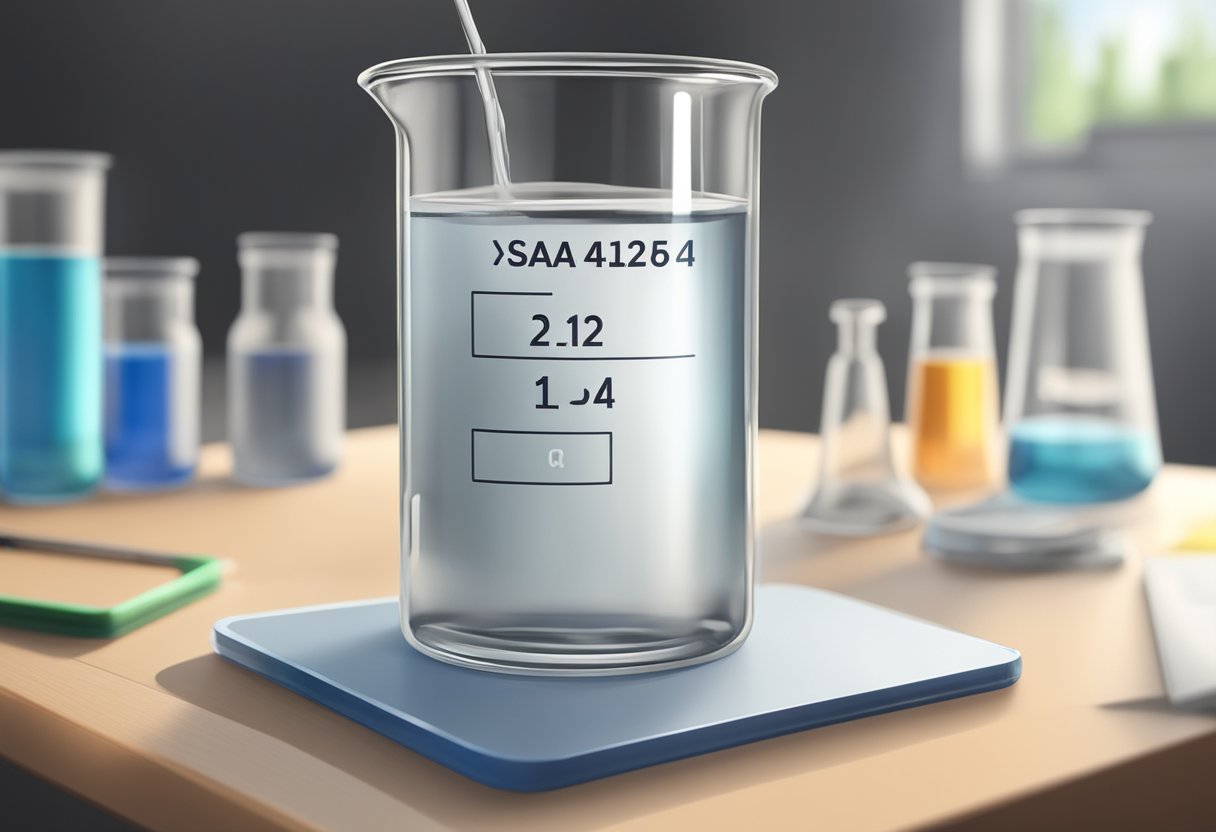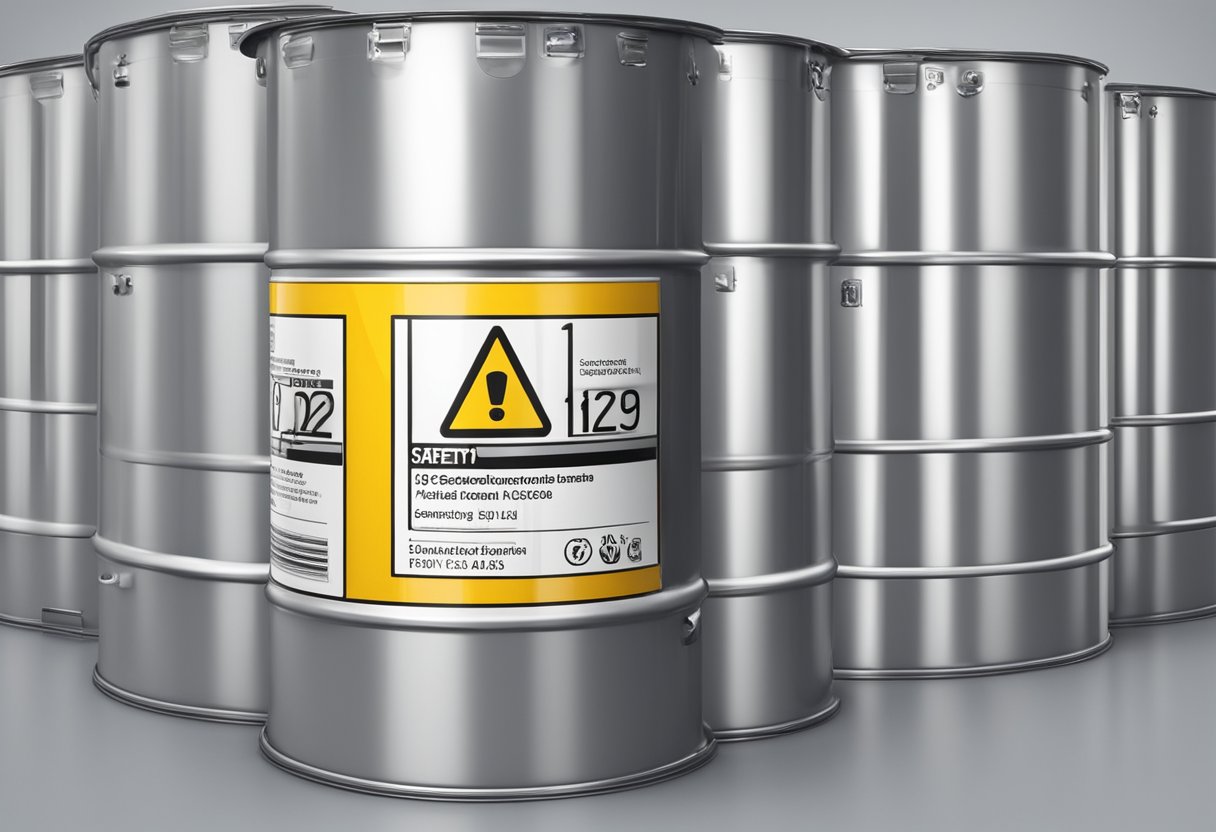CAS No 124-04-9: What You Need to Know About this Chemical Compound
19/01/2024
CAS No. 124-04-9 is a chemical compound that is widely used in various industries, including pharmaceuticals, cosmetics, and agriculture. This compound is also known by its common name, 4,4′-Methylenebis(2-chloroaniline) or MBOCA. It is a type of aromatic amine that is commonly used as a curing agent for polyurethane elastomers and epoxy resins.

MBOCA is a highly reactive chemical that is used to crosslink polymers, which makes them stronger and more durable. It is used in the production of a wide range of products, including automotive parts, industrial coatings, and adhesives. However, exposure to chem MBOCA can be harmful to human health, and it is classified as a potential carcinogen by the International Agency for Research on Cancer (IARC). As a result, there are strict regulations in place to limit exposure to this compound in the workplace and in consumer products.
Chemical Identity

CAS Number
CAS Number 124-04-9 refers to the chemical compound 1,4-Butanediol. It is a colorless and odorless liquid that is soluble in water and has a boiling point of 230°C.
Molecular Formula
The molecular formula of 1,4-Butanediol is C4H10O2. It is a diol compound with two hydroxyl (-OH) groups attached to the butane chain.
Synonyms
1,4-Butanediol has several synonyms, including Tetramethylene glycol, Butane-1,4-diol, 1,4-Butylene glycol, and BD. It is commonly used as a solvent, plasticizer, and in the production of polyurethane and polyester resins.
In summary, 1,4-Butanediol is a colorless and odorless liquid with a molecular formula of C4H10O2. It is commonly used in various industrial applications and has several synonyms, including Tetramethylene glycol and Butane-1,4-diol.
Physical Properties

State at Room Temperature
CAS No 124-04-9 is a clear, colorless liquid at room temperature. It has a faint, sweet odor and is slightly soluble in water. This chemical is commonly used in the production of various organic compounds, including resins, plastics, and synthetic fibers.
Melting Point
The melting point of CAS No 124-04-9 is -80 °C (-112 °F). This low melting point makes it a useful solvent for low-temperature reactions and processes.
Boiling Point
CAS No 124-04-9 has a boiling point of 204 °C (399 °F). This high boiling point allows it to be used as a solvent for high-temperature reactions and processes.
Overall, CAS No 124-04-9 has unique physical properties that make it a valuable chemical in various industrial applications. Its clear, colorless liquid state at room temperature, low melting point, and high boiling point make it a versatile solvent for a wide range of chemical reactions and processes.
Safety Information

Hazard Classification
CAS No 124 04 9 is classified as a hazardous substance. It is important to handle this substance with care to prevent any harm to human health or the environment. The substance is classified as a skin and eye irritant, and may cause respiratory irritation if inhaled. It is important to wear appropriate personal protective equipment (PPE) such as gloves, goggles, and a respirator when handling this substance.
Handling Procedures
When handling CAS No 124 04 9, it is important to follow proper handling procedures to minimize the risk of exposure. The substance should be stored in a cool, dry, well-ventilated area, away from sources of heat and ignition. It should be kept in a tightly closed container to prevent spills or leaks. When handling the substance, it is important to avoid skin contact and inhalation of vapors. If contact with skin or eyes occurs, immediately flush with water for at least 15 minutes.
First Aid Measures
In case of exposure to CAS No 124 04 9, it is important to take appropriate first aid measures. If the substance comes into contact with skin, immediately remove contaminated clothing and wash the affected area with soap and water. If the substance comes into contact with eyes, flush with water for at least 15 minutes and seek medical attention. If the substance is ingested, do not induce vomiting and seek medical attention immediately.
Overall, it is important to handle CAS No 124 04 9 with care and follow proper handling procedures to minimize the risk of exposure. It is also important to take appropriate first aid measures in case of exposure.
Regulatory Information
REACH Status
CAS No 124-04-9 is listed under Annex III of the European Union’s Registration, Evaluation, Authorization, and Restriction of Chemicals (REACH) regulation. This means that manufacturers and importers of this substance are required to submit a registration dossier to the European Chemicals Agency (ECHA) if they intend to produce or import more than one tonne per year. The registration dossier must contain information on the substance’s properties, uses, and potential risks to human health and the environment.
OSHA Regulations
The Occupational Safety and Health Administration (OSHA) has established regulations for the safe handling and use of CAS No 124-04-9 in the workplace. Employers are required to provide appropriate training to their employees on the hazards associated with this substance, as well as the proper use of personal protective equipment (PPE) when handling it. OSHA also requires employers to maintain accurate records of employee exposure to this substance and to provide medical surveillance to employees who may be exposed to it at levels above the permissible exposure limit (PEL).
Overall, it is important for manufacturers, importers, and users of CAS No 124-04-9 to comply with all relevant regulations and guidelines to ensure the safe handling and use of this substance.
Production and Synthesis
Industrial Synthesis Methods
CAS No 124-04-9, also known as 2-Butanone oxime, is primarily synthesized in the industry through the Beckmann rearrangement of cyclohexanone oxime. This reaction involves the rearrangement of the oxime group to form an amide functional group. The reaction is typically carried out using sulfuric acid as a catalyst and heating the mixture to a temperature of about 80-100°C.
Another industrial method for the production of 2-Butanone oxime involves the reaction of butanone with hydroxylamine hydrochloride. This reaction is typically carried out in the presence of a base such as sodium hydroxide.
Laboratory Synthesis
In the laboratory, 2-Butanone oxime can be synthesized by the reaction of butanone with hydroxylamine hydrochloride in the presence of a base such as sodium hydroxide. The reaction typically takes place at room temperature and the product is isolated through simple distillation.
Another laboratory method for the synthesis of 2-Butanone oxime involves the reaction of butanone with hydroxylamine sulfate in the presence of a base such as sodium hydroxide. This reaction is typically carried out at a temperature of about 50-60°C and the product is isolated through simple distillation.
It is important to note that the synthesis of 2-Butanone oxime should be carried out with caution due to the potential hazards associated with the reactants and products involved. Proper safety measures should be taken to ensure the safety of the researcher and the environment.
Applications
Plasticizer Use
CAS No. 124-04-9, also known as Butyl benzyl phthalate (BBP), is a widely used plasticizer in the polymer industry. It is commonly used to improve the flexibility, durability and workability of various plastics, including PVC, polyurethane, and synthetic rubbers. BBP is known for its excellent compatibility with a wide range of polymers, and its ability to improve the mechanical properties of plastics.
BBP is commonly used in the production of flexible PVC products such as cables, wires, and tubing. It is also used in the production of automotive parts, toys, and other consumer goods. BBP is highly effective in improving the flexibility and durability of these products, making them more resistant to cracking, breaking, and other forms of damage.
Solvent Applications
In addition to its use as a plasticizer, CAS No. 124-04-9 is also used as a solvent in a variety of applications. BBP is highly effective in dissolving a wide range of organic compounds, making it useful in the production of paints, coatings, and adhesives.
BBP is also commonly used as a solvent in the production of fragrances, flavors, and other cosmetic products. Its excellent solvency properties make it highly effective in dissolving and dispersing a wide range of organic compounds, allowing for the production of high-quality fragrances and flavors.
Overall, CAS No. 124-04-9 is a versatile and highly effective chemical that is widely used in the polymer and chemical industries. Its excellent plasticizing and solvency properties make it a valuable component in a wide range of products and applications.
Environmental Impact
Biodegradability
CAS No 124-04-9 has been found to be readily biodegradable in aerobic conditions. However, it may persist in anaerobic environments, leading to potential accumulation in sediments. The substance has been reported to have a half-life of 3-4 weeks in soil and water, which suggests that it has a moderate persistence in the environment.
Toxicity to Aquatic Life
Studies have shown that CAS No 124-04-9 may have harmful effects on aquatic life, particularly fish and aquatic invertebrates. The substance has been found to have acute toxicity to fish, causing mortality at concentrations as low as 0.1 mg/L. It has also been shown to have chronic toxicity to some aquatic invertebrates, causing reduced growth and reproduction.
Overall, while CAS No 124-04-9 may be readily biodegradable in aerobic conditions, it may persist in anaerobic environments and have harmful effects on aquatic life. It is important to handle and dispose of this substance properly to minimize its impact on the environment.
Health Effects
Exposure Routes
CAS No. 124-04-9, also known as 1,2,4-Trimethylbenzene, is a colorless liquid with a sweet odor. This chemical is widely used in the production of solvents, dyes, and polymers. Exposure to 1,2,4-Trimethylbenzene can occur through inhalation, ingestion, or skin contact.
Inhalation of 1,2,4-Trimethylbenzene can cause irritation of the respiratory tract, leading to coughing, wheezing, and shortness of breath. Long-term exposure to high levels of this chemical can also lead to neurological symptoms such as dizziness, headaches, and confusion.
Ingestion of 1,2,4-Trimethylbenzene can cause gastrointestinal irritation, leading to nausea, vomiting, and diarrhea. In severe cases, ingestion of this chemical can also cause liver and kidney damage.
Skin contact with 1,2,4-Trimethylbenzene can cause irritation, redness, and dermatitis. Prolonged skin contact can also lead to the absorption of this chemical into the bloodstream, causing systemic effects.
Toxicological Profile
The toxicological profile of 1,2,4-Trimethylbenzene has been extensively studied. Animal studies have shown that this chemical can cause damage to the liver, kidneys, and lungs. Chronic exposure to high levels of 1,2,4-Trimethylbenzene has also been linked to an increased risk of cancer.
The International Agency for Research on Cancer (IARC) has classified 1,2,4-Trimethylbenzene as a Group 3 carcinogen, meaning that there is limited evidence of its carcinogenicity in humans and sufficient evidence of its carcinogenicity in animals.
Overall, exposure to 1,2,4-Trimethylbenzene should be minimized to reduce the risk of adverse health effects. Proper personal protective equipment and ventilation should be used when handling this chemical.
Analytical Methods
Spectroscopy
CAS No 124-04-9 can be analyzed using various spectroscopic techniques. Infrared (IR) spectroscopy is a common method used to identify the presence of functional groups in a molecule. The IR spectrum of CAS No 124-04-9 shows characteristic peaks at 2950 cm^-1 and 2850 cm^-1, which correspond to the C-H stretching vibrations of the alkyl groups.
Nuclear magnetic resonance (NMR) spectroscopy is another technique used to analyze CAS No 124-04-9. Proton NMR can be used to identify the number and type of protons present in the molecule. The NMR spectrum of CAS No 124-04-9 shows peaks at 1.2 ppm and 2.3 ppm, which correspond to the protons in the alkyl groups.
Chromatography
Chromatography is a separation technique used to separate and analyze the components of a mixture. Gas chromatography (GC) and high-performance liquid chromatography (HPLC) are commonly used to analyze CAS No 124-04-9.
GC is a technique used to separate volatile compounds. The sample is vaporized and passed through a column packed with a stationary phase. The compounds are separated based on their boiling points and affinity for the stationary phase. The separated compounds are then detected using a detector such as a flame ionization detector (FID).
HPLC is a technique used to separate non-volatile compounds. The sample is dissolved in a solvent and passed through a column packed with a stationary phase. The compounds are separated based on their affinity for the stationary phase. The separated compounds are then detected using a detector such as a UV detector.
Overall, these analytical methods provide valuable information about the chemical structure and composition of CAS No 124-04-9.
Trade and Commerce
Global Market Trends
CAS No. 124-04-9, also known as 2-Methyl-1,3-propanediol, is a colorless, odorless, and viscous liquid. It is commonly used as a solvent in various industries such as cosmetics, pharmaceuticals, and plastics. The global market for 2-Methyl-1,3-propanediol is expected to grow steadily in the coming years.
The growth of the 2-Methyl-1,3-propanediol market is driven by the increasing demand for cosmetics and personal care products, especially in emerging economies. The rising awareness about personal hygiene and grooming is also contributing to the growth of the market. In addition, the growing demand for plasticizers in the plastics industry is expected to boost the demand for 2-Methyl-1,3-propanediol.
Major Producers and Consumers
The major producers of 2-Methyl-1,3-propanediol include LyondellBasell Industries, BASF SE, and Dow Chemical Company. These companies have a strong presence in the global market and are investing in research and development to improve the quality of their products.
The major consumers of 2-Methyl-1,3-propanediol are the cosmetics and personal care industry, the pharmaceutical industry, and the plastics industry. These industries use 2-Methyl-1,3-propanediol as a solvent, plasticizer, and intermediate in the production of various products.
In conclusion, the global market for 2-Methyl-1,3-propanediol is expected to grow steadily in the coming years due to the increasing demand for cosmetics and personal care products, the rising awareness about personal hygiene and grooming, and the growing demand for plasticizers in the plastics industry. The major producers and consumers of 2-Methyl-1,3-propanediol are investing in research and development to improve the quality of their products and meet the growing demand from various industries.




